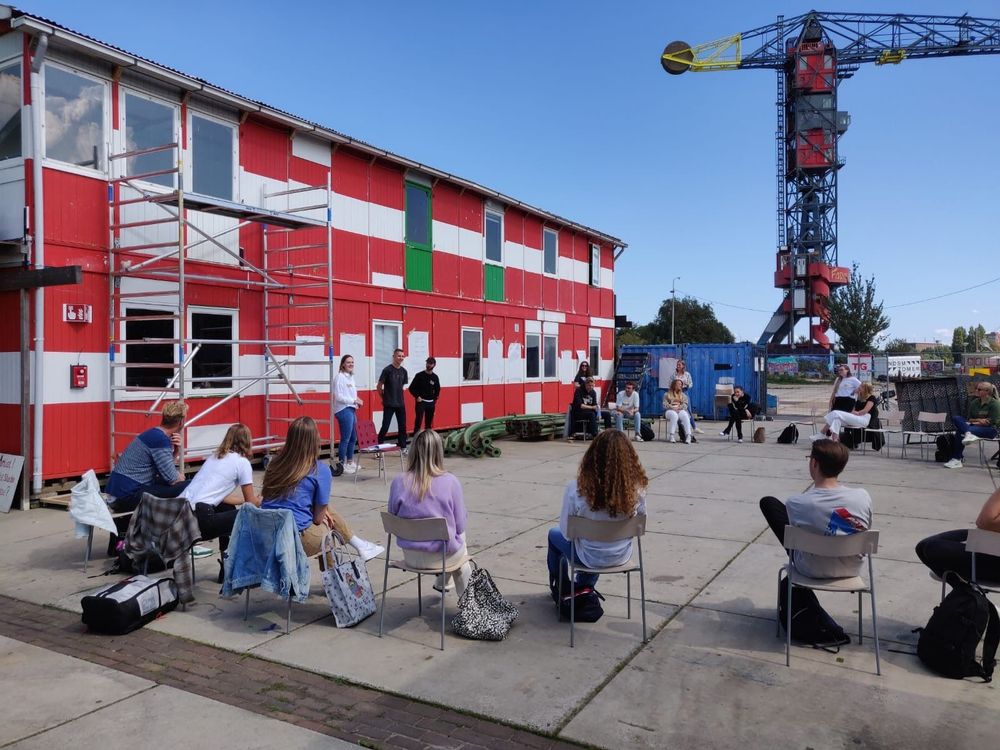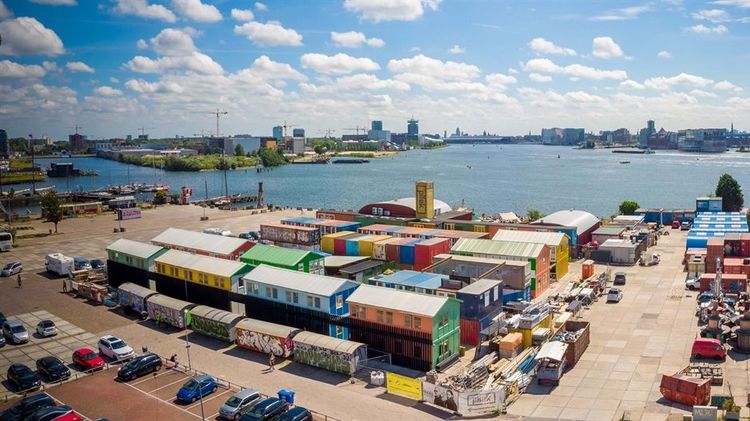BART-JAN STEERENBERG: FACILITATING CREATIVE GROWTH IN EDUCATION
Bart-Jan Steerenberg (1975), designer, artist, teacher and founding father of The Institute of Creativity. For the past couple of years he’s been doing research into creativity at The Amsterdam University of Applied Sciences. As a result, he believes creativity is one of the most important 21st century skills, which led him to set up an educational platform on creativity.
Where does your interest in creativity come from?
BS: “As a teacher, I’m always trying to get students excited about the creative process. I push them to try new things and aim for originality, not just functionality. I want to unlock their creative potential. That isn’t always an easy task because you’re working in this big educational institution. But thankfully we have minors where I can facilitate creative growth in students.”
What does that look like?
BS: “Your level of creativity is linked to how your brain is wired but you can still influence things by opening yourself up to the creative process and to the uncertainty that comes with that. I for one always try to get out of my comfort zone. I try to be open to new ideas, work with people and move forward. And I urge my students to do the same. I also create the en environment that is conducive to creativity. Location is important: we have a studio at Amsterdam’s NDSM where we’re surrounded by all sorts of creative people: designers, artists, etc.
We also make sure that the group of students we work with is diverse in that we have students from various international programs and backgrounds. Research shows that having a diverse group of people benefits creativity and innovation. I’ll give you an example: I set up the minor Immersive Environments and here students are exposed to an abundance of inspiration and opportunities. We use all kinds of new techniques and materials, like projection mapping with sensors.
My role as a teacher is more that of a co-creator and together with the students I get to explore whole new fields. We invite experts in their own specific field, from art to philosophy, to give a lecture and share their knowledge. And we also select interesting project partners to collaborate with. We have students working on projects for museums, but they can also create retail experience for consumer brands. The students really get bombarded with a lot of information and inspiration in a short amount of time. By exposing them to all these different things students can find something that makes their creative hearts beat faster. They become intrinsically motivated to work on something and you end up seeing tremendous personal growth.”
“Research shows that having a diverse group of people benefits creativity and innovation.”
Working with other people. Sounds simple enough but it seldom is, isn’t it?
BS: “You just need to beware of creativity killers. For instance, brainstorming in a large group never works. You really need to give people more space and time to reflect and come up with ideas. You also need a safe environment, one where there isn’t that much hierarchy or pressure. You want people to feel comfortable so they can express themselves. You can’t think big when you’re stuck in a small cubicle.”
Why do you consider creativity a crucial 21st-century skill?
BS: “AI can generate a lot of ideas and come up with a lot of different and new combinations. But we people still have our gut feeling. Our primal instincts help us determine whether or not something can have an impact on other human beings.
Francis Bacon famously said that wonder is the seed of knowledge. I’d argue that wonder is often the seed of creativity. We need to hold on to this sense of wonder and we also need to believe that anything is possible. We’re facing enormous challenges and creativity can help create some much needed answers and solutions.”
Okay, so when you talk about challenges we’re thinking water shortage, climate change, economic disparity: to what extent can creativity help to ‘solve’ these big issues?
BS: “In the Immersive Environments minor we’re mainly concerned with creating experiences, but these relatively ‘small’ creative exercises could very well translate into bigger things. You can take small steps and end up solving big problems. Working together is key. In our minor we have students from different backgrounds working together but they usually graduate by themselves. I’d love to change that and have students from art academies and technical universities work together on a graduation project. By bringing people from different disciplines together you get fresh perspectives and quite possibly the kind of creative solutions that we so desperately need.”
Love that idea of a communal graduation project, but how realistic is that? Having a minor to experiment is one thing but what you’re proposing means cutting through a lot of red tape.
BS: “I believe that even with a small group you can bring about a lot of change in education and learning experiences. Gradually, colleagues are also looking into this and together we’re trying to find ways to use new educational methods on a larger scale. Project education hasn’t really allowed much room for things like incubation of ideas and rumination time, which are extremely important in the creative process. I believe in design by doing. Learning about methods is one thing but there’s more to creativity than desk research and reading books: you need to test things and try things out. And not just at the end of the project, but throughout the project. You need to make things physical and visual in an early stage and then you can really start making progress.”
So why set up TIOC?
BS: “I noticed that everybody is so busy doing their own thing that they don’t really know what’s happening in a different minor, let along a different school or country. I saw a lot of graduation shows and it struck me that many students were reinventing the wheel instead of building on what previous students had done. At Delft University you see the opposite with new students working on a new iterations of the solar car and with great succes! My goal is to make student work and their progress more transparent. The focus should lie less on an end product and more on the process of creative growth and the different ideas that students have. It's really just about showing creative growth. We interview experts about creativity. We offer tips, tools and training. We help to unlock creative potential, link students to companies, and set out creative challenges.”
“If you surprise yourself, you're already being creative."
Who is the target audience?
BS “The platform is primarily aimed at students or young creatives who are still in their creative development. But anyone with a love for creativity and a willingness to learn new skills and link to other creatives is welcome to take part.”


Could you tell a bit more about the design challenges?
BS: “We’re going to set out a number of design challenges, which are basically briefings that hopefully will excite students. One challenge will focus on how to design not for capitalism. How can you, in a society where almost everything is about making a profit, design for a better world? Another design challenge could be designing new experiences. Everybody is on their screen these days, which is a very isolated experience, but how can you create an overwhelming experience that people can enjoy, together, in one room? We’re also interested in asking students about coming up with new, immersive retail or restaurant experiences.”
How do you feel about everybody jumping on the creativity train? Is there a danger of ‘creative washing’ with companies doing creative exercises but never really implementing change or unlocking their employees’ full creative potential?
BS: “Like how design thinking has been embraced by the corporate world? I don’t see any immediate danger there. I would love for corporate giants to focus more on design thinking and really reevaluate the design process because that can lead to improved service design or better products. Creative growth isn’t necessarily easy to obtain, but it’s something that companies should aim for. Embrace creativity and allow for creative opportunities in your team.”
Finally, what is your definition of creativity?
BS: “There are a lot of different definitions that I agree with. One that resonates with me is this idea that you change your way of thinking and make connections that are new to you. If you surprise yourself, you're already being creative.”
Check out Bart-Jan's TIOC profile for a portfolio of his work and his creative process.
Case video from Deviator on Vimeo.

Comments